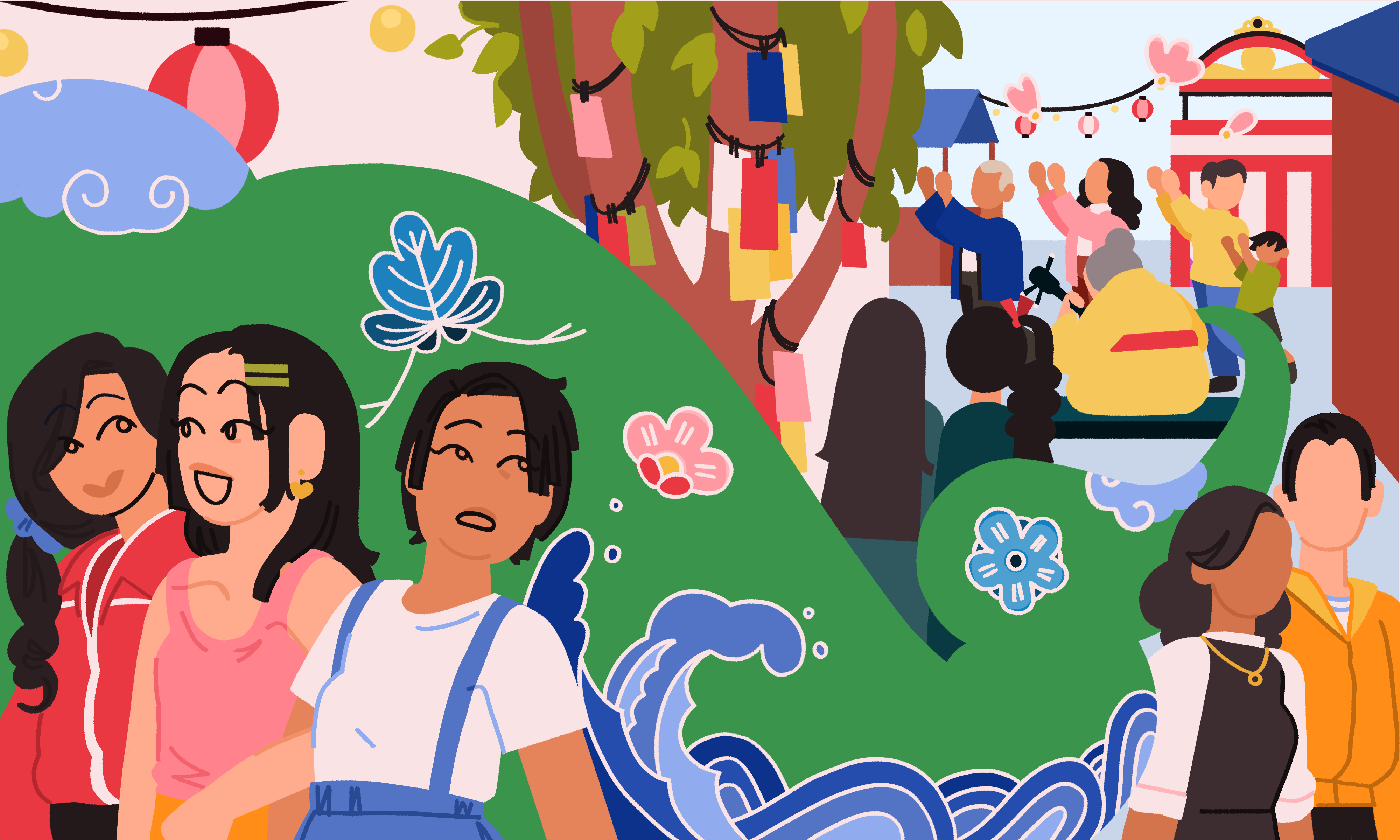
SHIDEH GHANDEHARIZADEH / NEXTGENRADIO
What is the meaning of
home?
Laura Dux speaks with Yuko Yamauchi, the executive director of the Okinawa Association of America, about the discovery of her cultural identity through music and art. The pursuit of traditional art led her to live in Okinawa for six years, to connect with her extended family, and to the job she still has to this day.
Keeping Okinawa Alive Through Music, Dance and Family
Listen to the Story
Click here for audio transcript
Yuko Yamauchi:
Even if you don’t have land, a physical space to occupy and call home, you keep the culture, the people, alive, and that’s, like, everything.
My name is Yuko Yamauchi. I am considered Shin-Nisei, so, second-generation Okinawan American.
I am currently the executive director for the Okinawa Association of America, Inc., or OAA. It’s a non-profit whose mission is to preserve, promote and perpetuate the Okinawan culture.
I have an opportunity to, kind of, shape what OAA does in making a space, right? Where I hope that other people would feel that it’s home.
Well, I was born in Okinawa, in Naha, at the Red Cross Hospital in 1971. I came here to the States with my parents. I was only seven months old. I grew up mostly in Gardena. I went to high school in Torrance, and I’m living now back in Gardena.
The moment that I realized that Okinawan music was different than, let’s say, Japanese music–because I think I thought they were the same–I think it was, maybe, junior high. I had stopped dancing at that point. So it was a rebellion thing, like I wanted my hair short. I didn’t like keeping it long to be putting it up. So junior high, I chopped my hair off, stopped dancing. But then here I am with my friends, and we were at some cultural festival. And then I heard, I heard the music.
[Sanshin okinawan music begins to play]
So I was like, oh! You know what? And I’m telling my friends, “Hey, you know, let’s go check it out.” And they’re like, “Why?” And I’m like, “‘cause the music.” And they’re like, “Yeah?”
And I’m like, “Don’t you know it?” And they’re like, “No.” And I said, “Isn’t it Japanese?” And they’re like, “It doesn’t sound Japanese to me.” So I remember thinking, oh, that’s weird.
I asked my mom about it when I went home. And she was like, “Oh, yeah, no, that’s not Japanese. That’s Okinawan.” But they didn’t know what it was. Like, they didn’t even say, like, “Oh, no, that’s not Japanese, it’s Okinawan.” They’re saying they never heard that before.
And she was like, “Yeah, because it’s different. Okinawa has its own culture. You know, its own history.” And I remember going, “Well, why didn’t you tell me that?” And she’s like, “Well, I didn’t know I had to.”
[Strum of sanshin strings]
So, the sanshin is a three-stringed instrument. It’s basically like a lute. It came from China, and it’s got this long neck that’s often made of ebony. And then the body, usually covered in snakeskin.
When I play the sanshin, there’s a phrase in Okinawan–well, actually, that’s not Okinawan–the Japanese phrase, chigasawagu, which is like, your blood starts to race, or your heart races.
When I hear Okinawan music, and in particular the sanshin, it really resonates with me. So when you’re singing, it really does sort of transform. So it’s very healing.
[Yuko playing the sanshin and singing]
And meditative. I don’t know, I feel like I get put in a trance sometimes when I’m playing.
Home is where I think one can be themselves. Not worrying about definitions, not worrying about judgment. A place, a haven, a place where you feel safe.
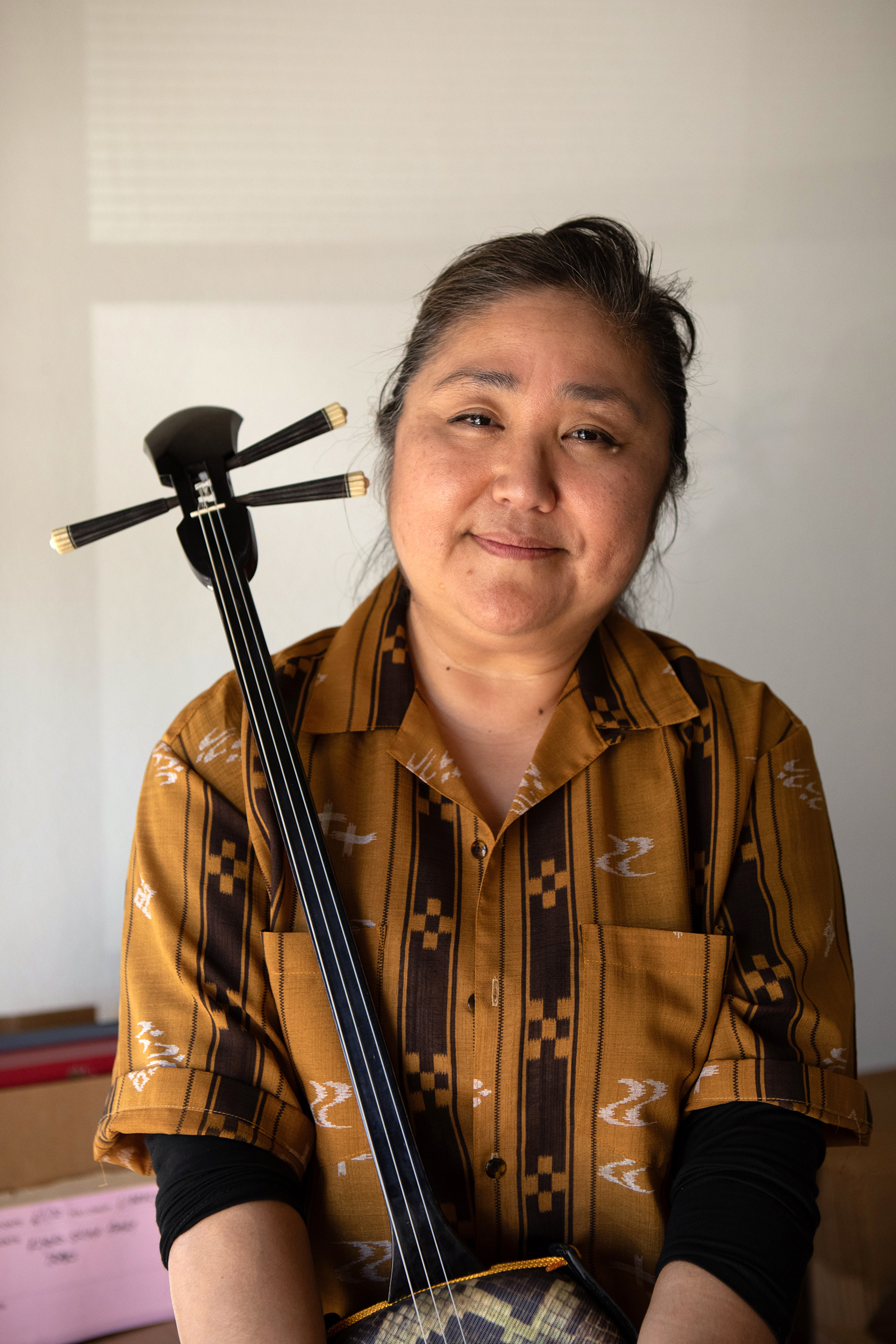
LAURA DUX / NEXTGENRADIO
No one would know that the girl who rebelled against Okinawan culture — by quitting dance classes and chopping off her hair — would end up as the executive director of an organization that promotes that very culture and its various art forms.
Yuko Yamauchi is the executive director of the Okinawa Association of America (OAA), a non-profit whose mission is to preserve, promote and perpetuate Okinawan culture.
“I’m the first executive director,” Yamauchi said. “I have an opportunity to kind of shape what OAA does in making a space where I hope that other people would feel that it’s home, as well.”
Yamauchi, born in Okinawa in 1971, immigrated with her parents at seven months old to Gardena, Calif., and the family almost immediately became members of the OAA.
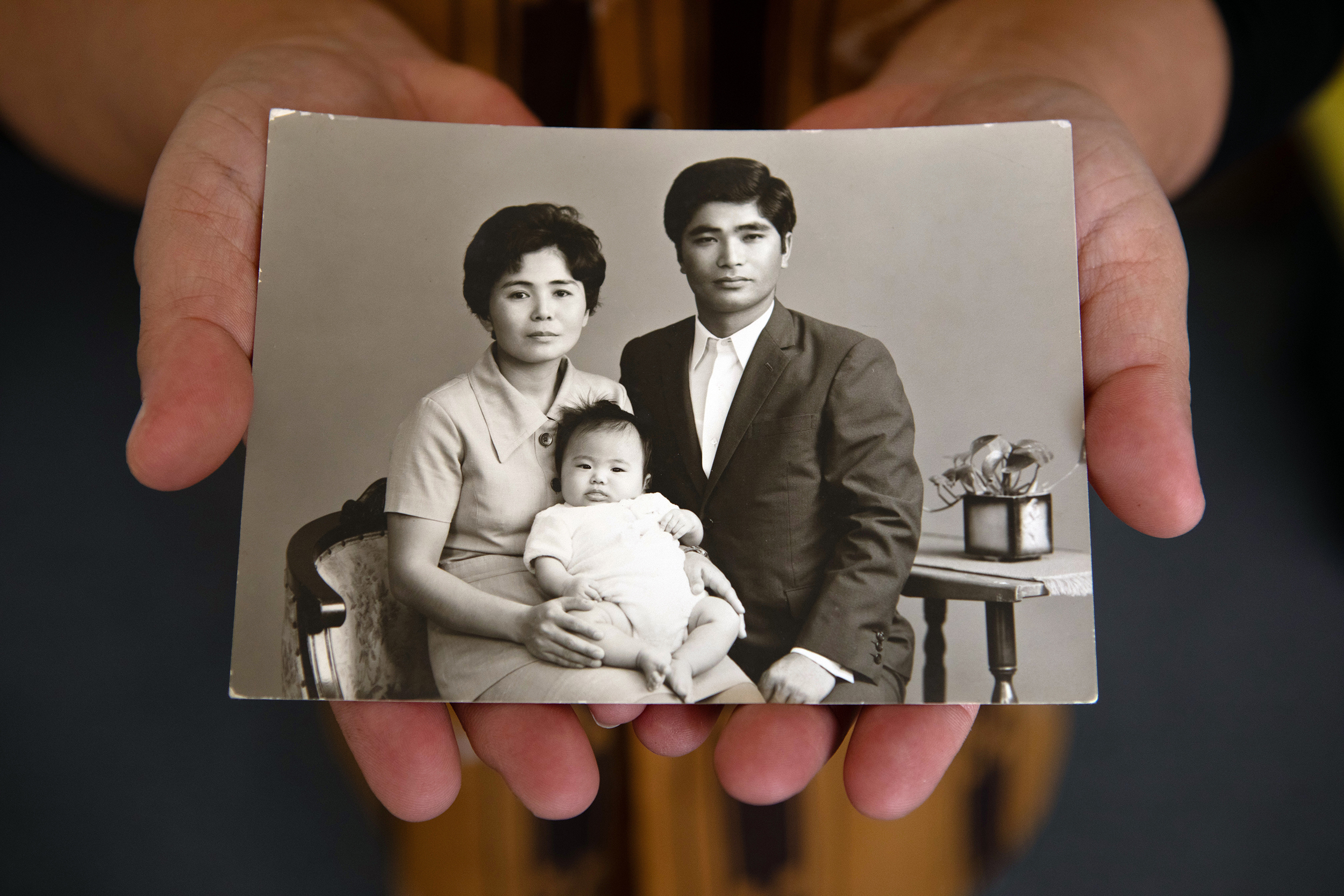
LAURA DUX / NEXTGENRADIO
The OAA began about 115 years ago as a kenjikai (mutual aid group) for the Southern California Okinawan community. Like similar organizations across the U.S., the OAA worked to meet the needs of immigrants as they established new lives in their new country: finding jobs and housing and sending funds to their community back in Okinawa.
As a pre-teen, Yamauchi didn’t consider the OAA a “cool” place to hang out.
“I always saw the OAA as … an older person’s thing,” Yamauchi said. “It’s not something I need to get involved with.”
Over the years, she began understanding how unique — and distinct from Japanese identity — Okinawa was.
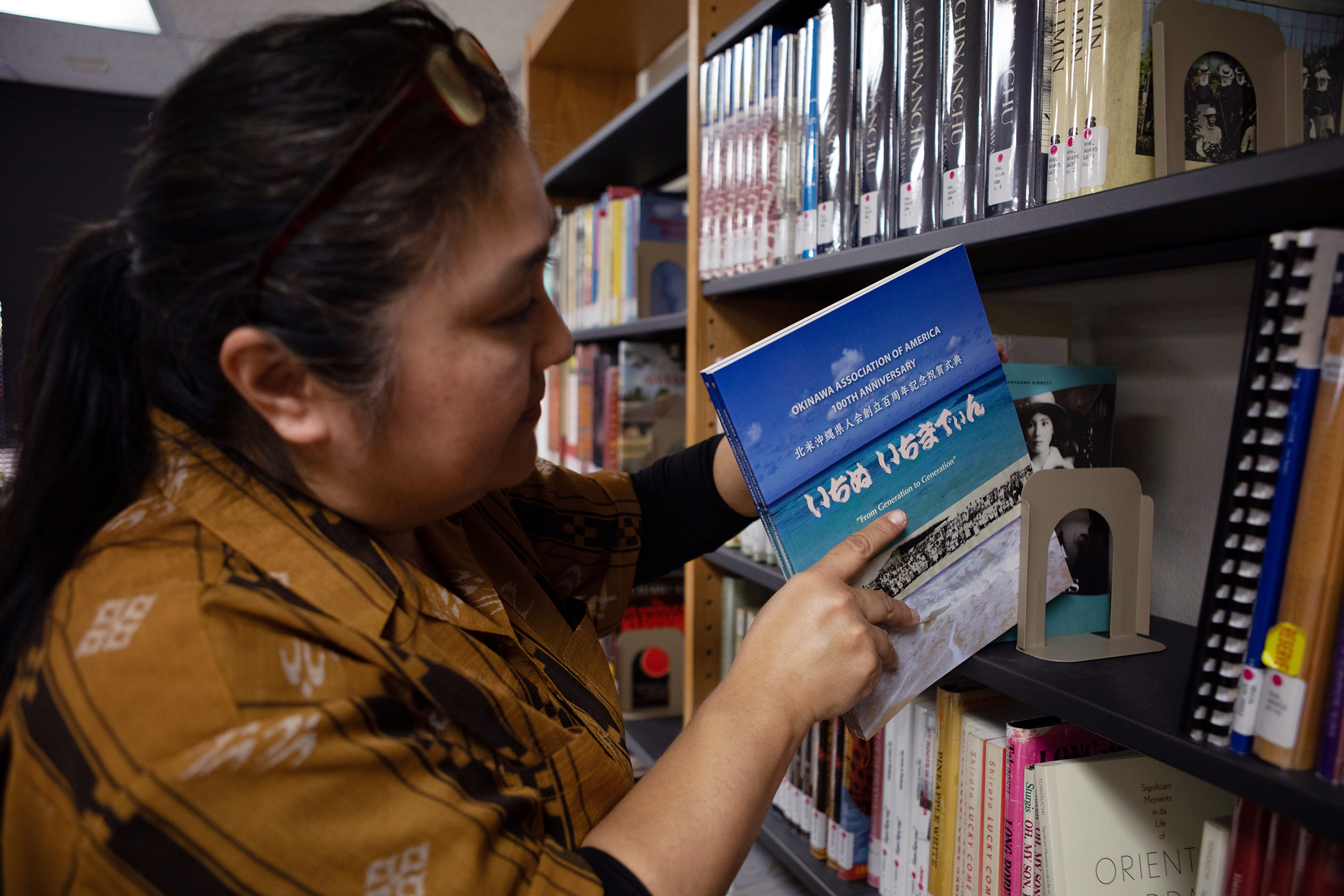
LAURA DUX / NEXTGENRADIO
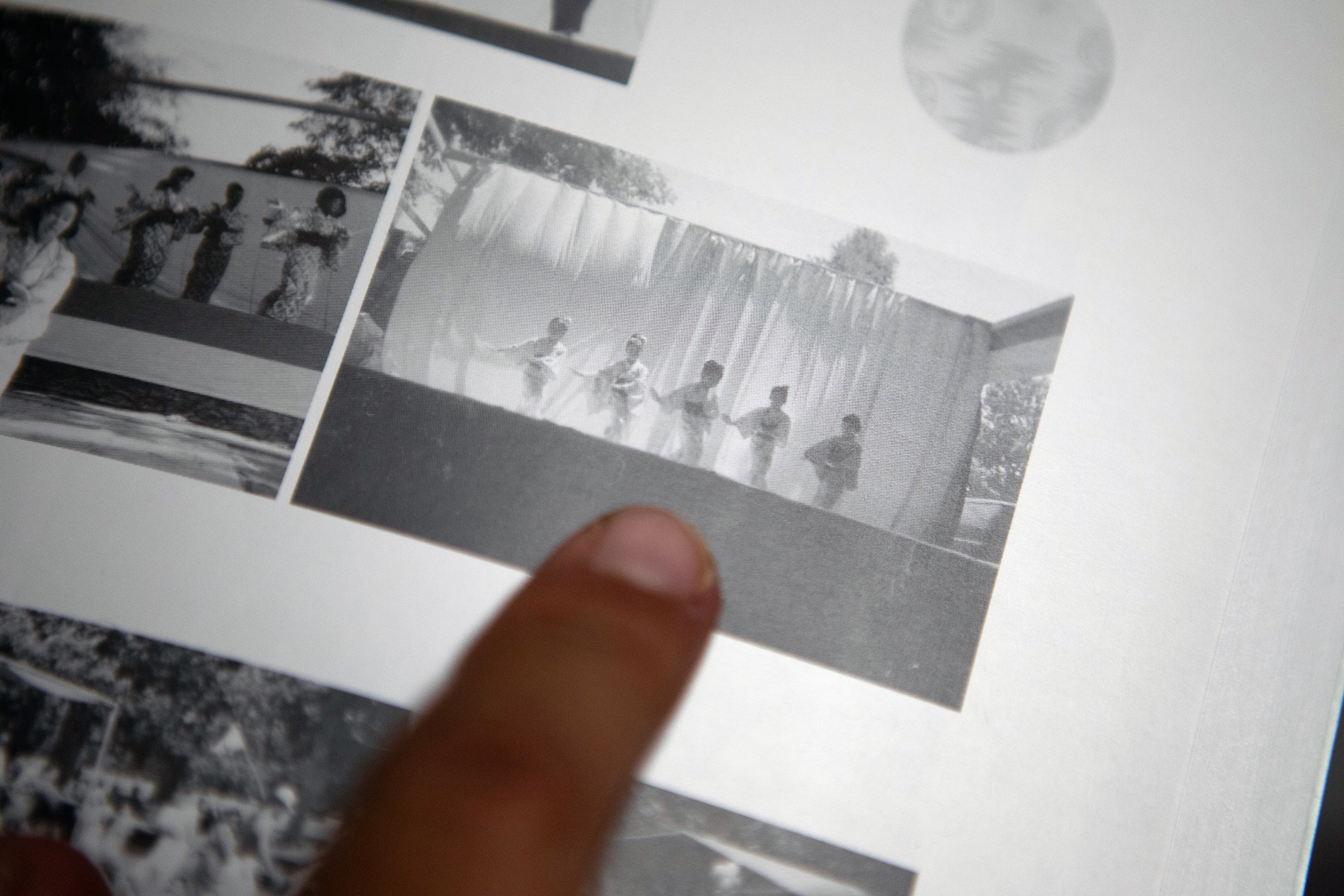
LAURA DUX / NEXTGENRADIO
Okinawans have their own languages and cultures, and at one point they lived autonomously in the Ryukyu Kingdom before Japan annexed and gave the prefecture (or province) the name Okinawa.
Over a hundred years since the annexation of Ryukyu, popular notions of what is universally “Japanese” have subsumed Okinawan culture. When it comes to Okinawa’s political or historical identity, people remember Okinawa as one of the theaters of battle during World War II, where a third of the Okinawan population died.
Yamauchi is among the Okinawans who never knew this history.
One of the moments that opened her eyes, and ears, to Okinawan culture was when she attended a Japanese festival with her friends, and heard what she thought was Japanese music. But when she mentioned it to them, no one knew the music but her. That’s when it hit her: Her Okinawan identity was truly different and she needed to find her way back to dancing.
“It wasn’t until I was in my 20s when I was really thinking about identity,” Yamauchi said.
The OAA helped her apply to an Okinawan government-sponsored scholarship program for students to live in Okinawa for a year and immerse themselves in any academic or cultural area of interest. She applied when she was 29, the last year she would be allowed in the program, and studied traditional dance.
“That was probably the most significant time in my life,” Yamauchi said. “I had always dreamed of going to Okinawa.”
Her extended family lives in Okinawa, and through the scholarship program, she was able to meet and really get to know them for the first time. What was supposed to be one year in Okinawa became six years.
“I got to connect with my relatives,” Yamauchi said. “My sisters, they never had that opportunity, so I’m the one that’s always telling the stories of, you know, what grandma said, or, you know, what grandma does. Or, do you know mom looks just like [her]? She has the exact same expression.”

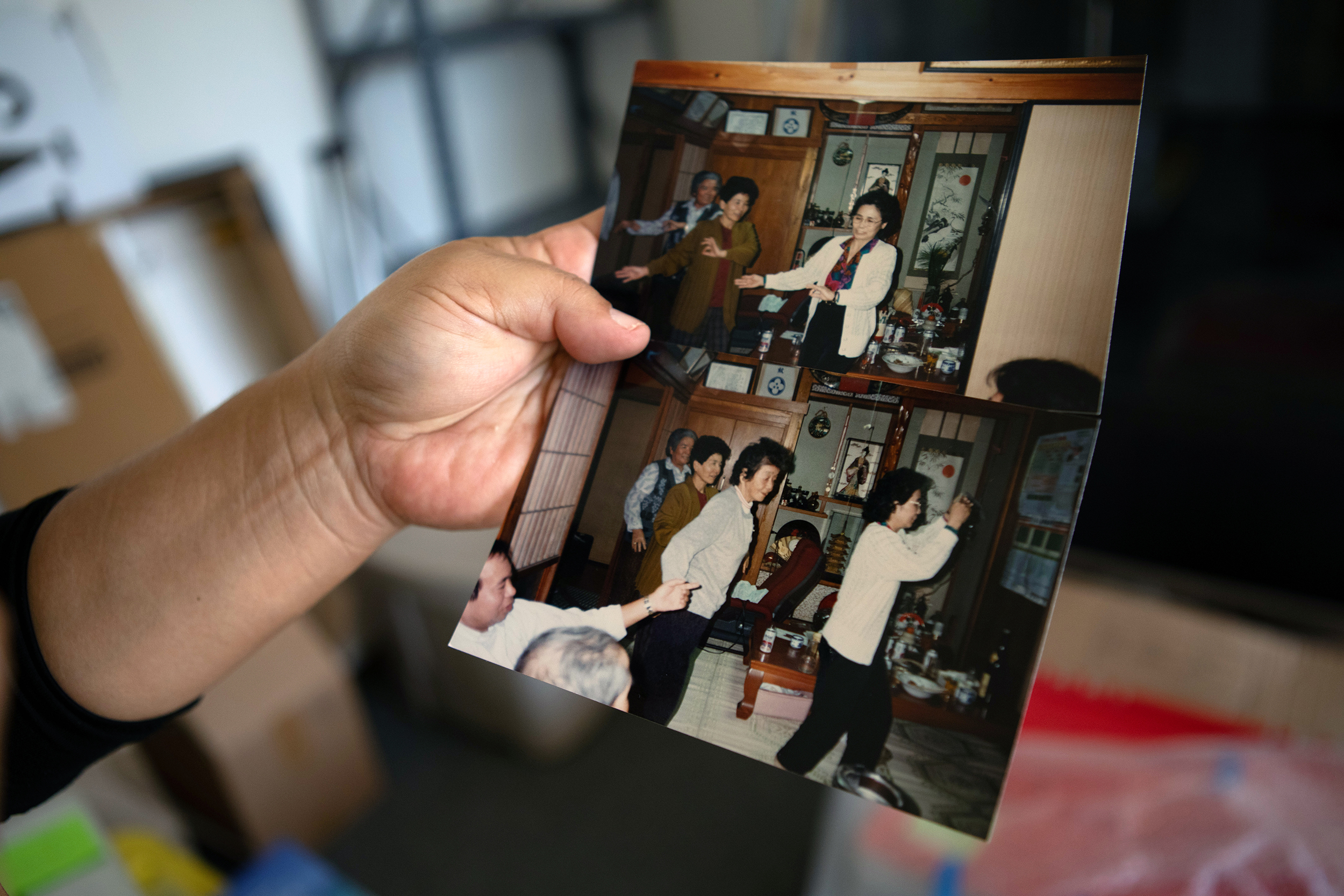
LAURA DUX / NEXTGENRADIO
In the six years Yamauchi spent in Okinawa, she immersed herself in art.
“The [dance] training was difficult. I actually hurt my back,” Yamauchi said. “There were these tests that I wanted to take, so I had to manage the pain while continuing to train because I thought, ‘Well, this is the only opportunity I’m going to have to do it.’”
While she continued her dance practice, she also began taking lessons to learn to play the sanshin, an instrument with roots in Chinese culture, and sing while playing it. For Yamauchi, who spent her childhood playing cassettes and dancing to this music, learning how to play it was a dream come true.
“[The singing is] in a language that I’m not a hundred percent familiar with,” Yamauchi said. “But I’m making these sounds. I feel there’s a calm, a quiet … but for the most part, it’s like an expansiveness.”

When she returned to the U.S. in 2006, she visited the OAA to thank the group for this transformative experience. The first thing they asked her was, “Do you have a job?”
“Well, I’m thinking about going back to school,” Yamauchi said. “But you know, if it’s part time, I’m willing to do it.”
Yamauchi has been working at the OAA ever since.
